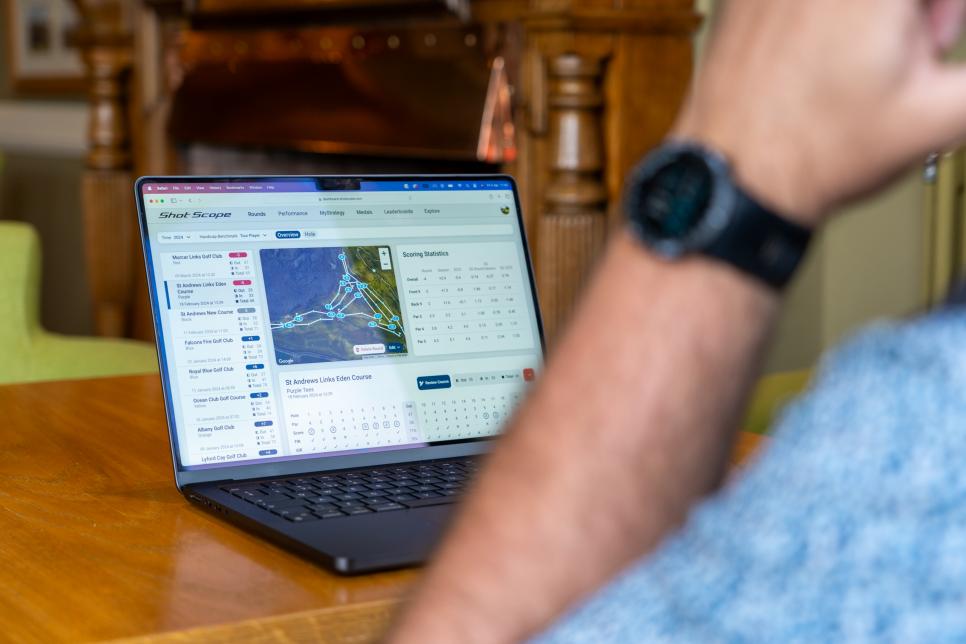Stat-tracking can help you choose the right new clubs – Australian Golf Digest

- by Admin
- September 16, 2024

Question: I’ve heard about stat-tracking apps, but what’s the value of knowing your stats when it comes to picking the right clubs to buy?
Answer: We are big proponents of stat-tracking and in particular the instantaneous, PGA Tour ShotLink-like data produced by devices and apps like Arccos and Shot Scope, the former of which recently recorded the billionth shot in its database. (That stat is staggering and provides a phenomenally meaningful baseline for getting comparative information with which to guide your performance versus other players like you.)
First of all, the data from Arccos and Shot Scope suggests the average user drops four to five strokes through the use of these systems. Understanding statistical strengths and weaknesses has fueled elite players and developed golf innovators like Scott Fawcett, Justin Ray, Lou Stagner and Edoardo Molinari, leading to major championship success and Ryder Cup wins.
But beyond the practical training aspects, a hidden benefit of today’s stat-tracking apps is finding the clubs in your bag that might be holding you back. Or in some cases, locating the holes in your set makeup that need to be filled with a solution that can only come about with a new club. Consider a few examples:
_Arccos%20SD.png.rend.hgtvcom.966.644.suffix/1632943808295.png)
- Driving. You might not believe you have a slice, but a decent stat-tracking app will show you where those missed tee shots are going. If you’re hitting 70 percent of them into the right rough, you need to take a hard look at changing your driver. That can be an anti-slice model, a shorter shaft, more loft, or simply a better shaft-clubhead combination that’s going to help you square the face. If Arccos stats show your tee balls are going much shorter than other golfers at your level, maybe that will be motivation to ditch that hand-me-down from the early Obama years. Another key benefit is providing a reliable gauge of how that new driver you bought is (or isn’t) working the way it was in the fitting bay. And if it’s not, you can go back to the fitter and get them to tweak the specs so you’re seeing the results you expected to see.
Hot List: The best new drivers of 2024.
- Iron play. Arccos might show you that your strokes-gained numbers get progressively worse the longer your approach shot. In fact, your numbers might drop off a cliff at 175 yards, indicating you might need to swap out your 5-iron for a 5-hybrid. Arccos research for Golf Digest showed that golfers from scratch to 25-handicappers were 87 percent more likely to hit the green with a hybrid than with the corresponding iron. Shot Scope has data that shows higher handicaps hit hybrids longer and more accurately than the corresponding iron. And every stats app will show you how far you hit each club in your bag. If any distance gaps between your clubs are less than 10 yards, you might want to see if a club adjustment is in order.
Hot List: The best new irons of 2024.
Hot List: The best new hybrids of 2024.
- Short game. If your stats for bunker play are monumentally worse than they are for similar-length chips and pitches, maybe you’re using the wrong sole grind on your sand club. For instance, you might see on Arccos that your average distance to the pin on chips from 0-25 yards is 12 feet, but at the same distance from the sand, it’s 27 feet. Yes, you need to work on your technique, but the right tool will help to improve that technique.
Hot List: The best new wedges of 2024.
- Putting. Forget whether you’re making or missing those four-footers. The real way to tell whether your putting game, and in particular your putter, needs some attention is to look at stats for lag putting. If you’re three-putting significantly more often than the average for a player like you, then you are likely not making solid contact on a consistent basis. That issue could be because you have the wrong weight or wrong shaft length.
Hot List: The best new putters of 2024.
Now, let’s be clear: Stat-tracking apps are a commitment, but nothing is better for understanding what you do well and what you don’t, and there is no better, faster way to improve than by understanding where the holes are in your game. Especially if some of those holes could be filled by the right new clubs.
This article was originally published on golfdigest.com
The Latest News
-
January 1, 2025‘It’s been a weird year’: Why Max Homa made a surprise move to Cobra – Australian Golf Digest
-
January 1, 2025‘I Love Virat Kohli’: PM Anthony Albanese on Australia India Cricket Rivalry
-
January 1, 2025Elena Rybakina rehires coach Stefano Vukov for 2025 season in shock move before Australian Open
-
January 1, 2025The Sentry picks 2025: Our caddie’s Ryder Cup-inspired best bet – Australian Golf Digest
-
January 1, 20252025 The Sentry tee times, TV coverage, viewer’s guide – Australian Golf Digest





